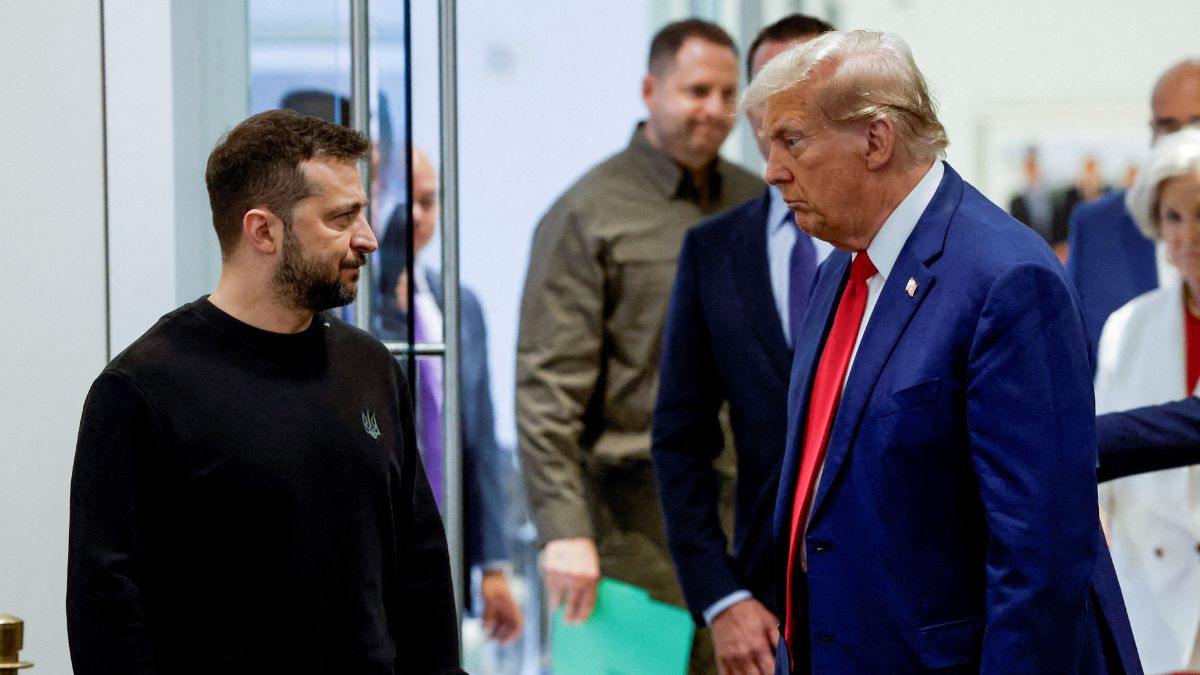The United States and Ukraine have agreed to the terms of a draft minerals deal that could significantly shape Kyiv’s economic future while securing Washington’s access to critical resources.
This agreement, central to US President Donald Trump’s broader strategy for ending the war with Russia, has been described as a key step in ensuring Ukraine’s stability and economic prosperity.
However, it notably lacks provisions for continued US military support or security guarantees for Ukraine, according to sources familiar with the negotiations, reported Reuters.
While Ukrainian President Volodymyr Zelenskyy is expected to visit Washington to finalise the deal, tensions between the two leaders remain high.
Just last week, they exchanged heated remarks, with Trump inaccurately calling Zelenskyy a “dictator,” and the Ukrainian leader countering that the US president was operating within a “disinformation bubble.” Despite these disputes, officials on both sides have signalled readiness to sign the agreement.
What is the US-Ukraine mineral deal?
A deal reportedly worth over $500 billion , would provide the US with access to Ukraine’s critical minerals.
The agreement follows weeks of high-stakes negotiations during which Zelenskyy claimed the US was pressuring Ukraine to sign a deal that would leave the country indebted for “10 generations.”
Reports suggest that while the current version of the deal is more favourable to Ukraine than Washington’s initial proposal, it still lacks the long-term security guarantees Kyiv had sought.
The final details remain undisclosed, but a draft agreement reviewed by officials indicates that Ukraine would contribute a significant portion of its mineral revenue to a US-controlled fund.
Although the US initially demanded a fixed $500 billion contribution, recent revisions have removed this specific requirement, opting instead for a revenue-sharing model. Despite these changes, the deal remains controversial, as it does not include concrete security commitments for Ukraine.
Why are Ukraine’s minerals so valuable?
Ukraine possesses a significant share of the world’s most sought-after minerals, which are essential for advanced technology, defence industries, and green energy transitions.
A 2022 analysis by the Kyiv School of Economics estimated that Ukraine controls over 100 major deposits of critical minerals, with some of the largest reserves in Europe.
Ukraine possesses 22 of the 34 minerals the European Union classifies as critical, including a significant portion of the world’s graphite, titanium, and lithium reserves.
However, Russia’s invasion has complicated access to these resources, with reports indicating that Moscow currently occupies up to 40 per cent of Ukraine’s metal deposits, including key lithium-rich areas.
According to Ukrainian and EU sources, Ukraine has deposits of 22 out of 34 minerals that the European Commission identifies as critical. These include:
Titanium – Used in aerospace, construction, and medical industries, Ukraine supplied around 7 per cent of the world’s titanium in 2019.
Lithium – Essential for batteries and energy storage, Ukraine holds an estimated 500,000 tons of lithium reserves, making it one of Europe’s largest potential sources.
Graphite – A key component in electric vehicle batteries and nuclear power plants, Ukraine previously accounted for one-fifth of global production.
Uranium – With the largest reserves in Europe, Ukraine’s uranium is vital for nuclear power generation.
Rare Earth Elements (REEs) – A group of 17 exotic minerals crucial for high-tech manufacturing, military equipment, and renewable energy technologies. Ukraine’s rare earth reserves include cerium, neodymium, erbium, yttrium, and lanthanum.
However, the ongoing war with Russia has put a significant portion of these resources at risk. According to Ukrainian think tanks, up to 40 per cent of Ukraine’s metal resources are now under Russian occupation, including two major lithium deposits in Donetsk and Zaporizhzhia.
Why does Trump want Ukraine’s minerals?
One of the primary drivers behind Trump’s push for Ukrainian minerals is the US-China rivalry. China currently dominates the global supply chain for critical minerals, controlling between 50 per cent and 75 per cent of global rare earth element production and refining.
The International Energy Agency (IEA) estimates that China processes about 90 per cent of rare earth minerals, 50-70 per cent of lithium and cobalt, and 35 per cent of nickel.
Trump’s administration has taken an aggressive stance against Chinese economic influence, imposing high tariffs on Chinese goods and restricting China’s access to US technology.
In response, Beijing has imposed export bans on several rare minerals , further exacerbating concerns in Washington. The US seeks alternative sources of critical minerals to reduce its dependence on China, and Ukraine’s deposits offer a potential solution.
How does this deal help Trump?
The mineral deal is not just about securing resources; it is also part of Trump’s broader geopolitical strategy. Trump has repeatedly signalled a shift in US foreign policy, prioritising economic interests over traditional alliances.
Trump has framed the deal as a means to recover the billions of dollars Washington has provided to Kyiv, stating, “The American taxpayer now is going to get their money back, plus.”
Beyond minerals, Trump has indicated that the US seeks financial compensation for its extensive military aid to Ukraine.
While the previous Biden administration framed assistance to Ukraine as grants, Trump views it as an investment requiring repayment. The proposed mineral deal could be a way to recoup some of the billions spent on supporting Ukraine since Russia’s 2022 invasion.
The outcome of these negotiations will have lasting consequences for both Ukraine and the US . If finalised, the deal could provide the US with a crucial supply of strategic minerals, reducing its reliance on China and bolstering American industries.
For Ukraine, however, the agreement raises difficult questions about sovereignty, economic independence, and security guarantees.
The war has already disrupted Ukraine’s ability to exploit its own resources, meaning any deal could take years before yielding substantial economic returns.
With inputs from agencies
)